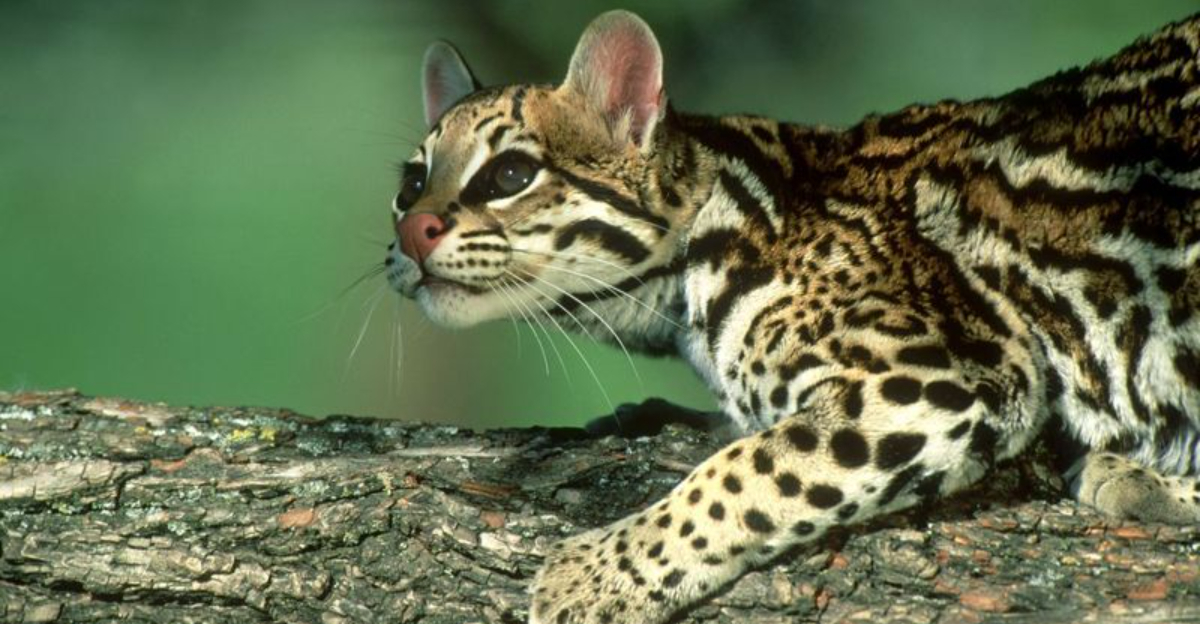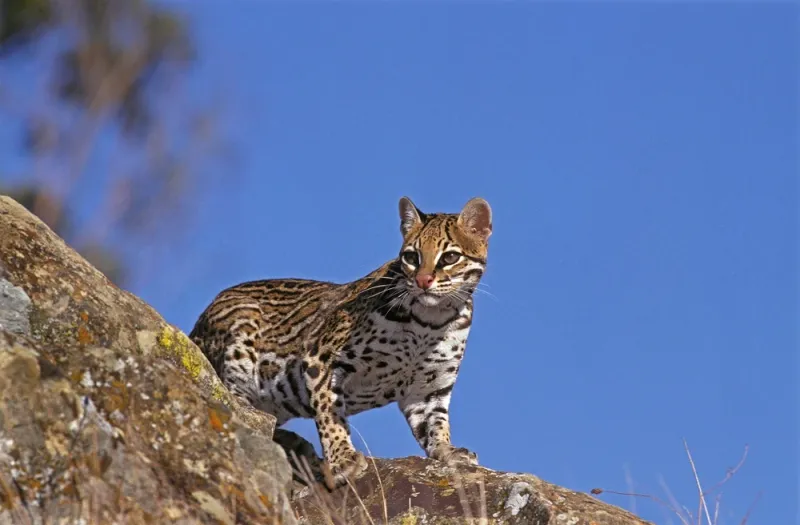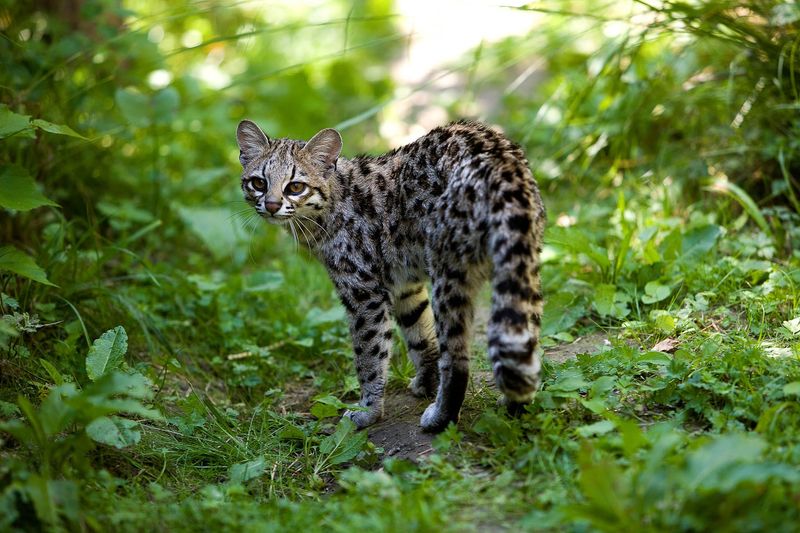📖 Table of Content:
With their mesmerizing coats and stealthy movements, wild cats have long fascinated both scientists and animal lovers alike. Among the many species roaming the forests of the Americas, the oncilla and the ocelot stand out not only for their beauty but also for the striking similarity in their appearances. At first glance, one might easily mistake these two cats for each other, as both exhibit spotted patterns and compact, agile bodies.
However, a closer examination reveals that these feline cousins differ in numerous ways, from their size and vocalizations to their preferred habitats and geographic distributions. These differences are essential for researchers and conservationists, as they inform how each species is studied, protected, and understood in the wild. The nuances in their behavior and biology also reflect how they have adapted to unique environmental pressures over time.
In this article, we take a detailed look at ten key differences between the oncilla and the ocelot, uncovering the features that distinguish these elusive carnivores. By understanding their distinctions, we not only learn more about each species individually but also gain deeper insight into the diversity and complexity of the ecosystems they inhabit.
1. Size
Measuring their body mass reveals one of the most apparent differences between these two cats. The oncilla is notably petite, typically weighing between 1.5 to 3 kilograms, making it one of the smallest wild cats in the Americas. In contrast, the ocelot is significantly larger, often tipping the scales between 8 to 18 kilograms. While the oncilla’s small size aids its agility in dense foliage, the ocelot’s more robust frame suits a broader range of activities and prey. This size contrast affects their predatory behavior, with the ocelot capable of tackling larger animals. Their size also influences how they interact with potential threats, with ocelots often asserting dominance over smaller cats like the oncilla. Ultimately, body size plays a crucial role in shaping their ecological niche and survival strategies.
2. Geographic Range
Spanning different regions of the Americas, the two cats exhibit distinct geographical distributions. The oncilla is most commonly found in Central America and the northern parts of South America, especially in areas such as Costa Rica, Colombia, and parts of Brazil. Meanwhile, the ocelot boasts a far broader range that extends from southern Texas in the United States all the way down to northern Argentina. This wider distribution allows the ocelot to thrive in a more diverse array of ecosystems. Oncillas, however, are more sensitive to environmental changes and often have a patchier presence across their range. These patterns reflect differences in adaptability and tolerance to human disturbance. Each species’ range tells a story of evolution, migration, and habitat specialization over centuries.
3. Habitat Preference
Living conditions favored by these cats vary considerably depending on their environmental preferences. Oncillas are drawn to humid, high-altitude cloud forests where dense vegetation offers ample cover and climbing opportunities. In contrast, ocelots are far more versatile and can be found in tropical rainforests, dry scrublands, coastal mangroves, and even seasonally flooded wetlands. This habitat flexibility gives ocelots a survival edge in areas increasingly affected by deforestation. The oncilla’s dependence on montane forests makes it more vulnerable to habitat fragmentation. While both species are secretive by nature, the oncilla’s habitat choice makes it even more elusive to researchers and observers. Such distinctions help explain why sightings of oncillas are significantly rarer in the wild.
4. Coat Pattern and Texture
Viewed side by side, the patterns on their coats offer subtle yet telling clues to their identity. The oncilla’s fur is soft and thick, covered with small, neatly spaced spots or rosettes that give it a delicate, fine-patterned appearance. Ocelots, in comparison, have a more dramatic look with larger, chain-like rosettes often linked by wavy lines or stripes. The ocelot’s coat is also sleeker and glossier, adding to its bold visual impression. Differences in fur patterning are not merely aesthetic; they also assist in camouflage suited to each cat’s specific environment. Oncillas benefit from their subdued coat in misty, shadowy forests, while ocelots use their bolder markings in dappled light habitats. Observing these patterns closely can provide valuable field identification cues for biologists and trackers alike.
5. Tail Length (Proportionally)
Examining the tail reveals a surprising morphological contrast between these similarly spotted cats. Oncillas possess relatively long tails when compared to their body size, a trait that aids in balance and navigation through trees. Ocelots, while still having moderately long tails, sport a shorter tail-to-body ratio due to their stockier build. This difference reflects the oncilla’s more arboreal lifestyle versus the ocelot’s greater tendency to remain on the ground. Longer tails are a key adaptation for life in the canopy, allowing for agile turns and stable movement along branches. In contrast, ocelots use their muscular bodies and shorter tails for bursts of speed on flat terrain. Though subtle, tail proportion is a strong indicator of each species’ behavioral ecology and preferred mode of movement.
6. Facial Features
Facial structure offers another layer of distinction that goes beyond fur and size. Oncillas have narrower, more delicate faces with subtle markings and softer features. The ocelot’s face is broader and flatter, highlighted by prominent dark stripes that run vertically or diagonally from the eyes. These facial markings are not just ornamental—they serve functions in communication and camouflage. Ocelots often display bolder facial expressions during interactions with rivals or mates, aided by their more visible markings. Oncillas, in contrast, appear more muted and reserved in both appearance and behavior. These variations reflect differences in social behavior and environmental pressures. Even in dim forest light, the face can serve as a key identifying feature for each cat.
7. Activity and Behavior
Different rhythms of daily life shape how these two cats survive and hunt. Oncillas are largely nocturnal and arboreal, often climbing through the upper canopy in search of small prey. Their elusive nature means they are seldom observed, and much about their habits remains a mystery. Ocelots, although primarily nocturnal as well, are more flexible and can sometimes be seen during daylight hours. They are also more terrestrial, using their strong limbs to stalk prey across forest floors. While both cats are solitary, ocelots tend to patrol larger territories and display more assertive territorial behaviors. The oncilla’s reclusive behavior may offer it protection from larger predators, including the ocelot. Behavioral distinctions like these help define their interactions within shared ecosystems.







